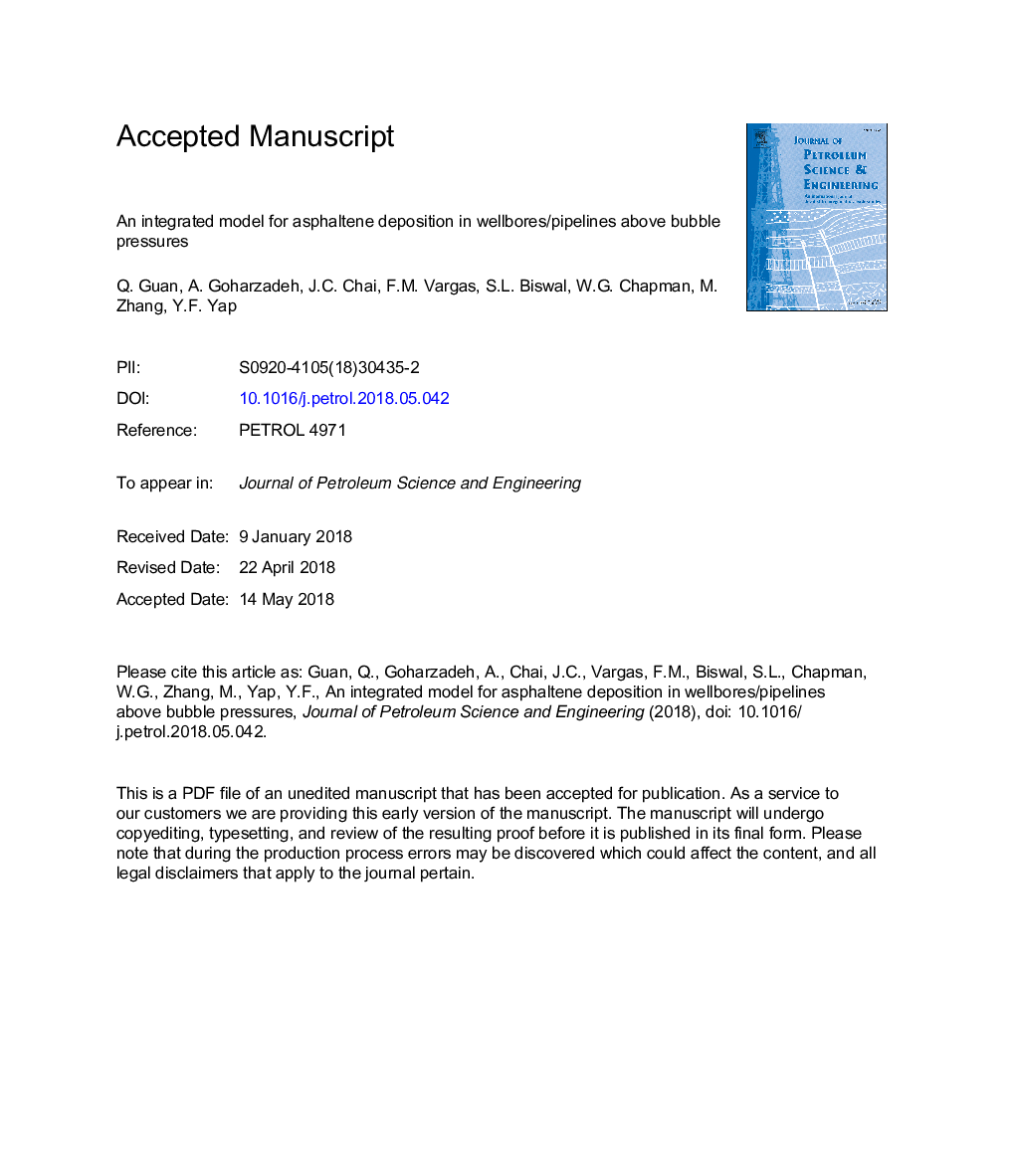| Article ID | Journal | Published Year | Pages | File Type |
|---|---|---|---|---|
| 8124572 | Journal of Petroleum Science and Engineering | 2018 | 65 Pages |
Abstract
Asphaltene has been recognized as the cholesterol of petroleum for decades due to its precipitation and deposition in oil production, transportation and processing facilities, causing tremendous losses to the oil industry each year. This work presents a numerical model to predict asphaltene deposition in wellbores/pipelines. A Thermodynamic Module is developed to model asphaltene precipitation, based on the sequential stability-testing-and-phase-split-calculation method using Peng-Robinson equation of state with Peneloux volume correction. A Transport Module is developed to model fluid transport, asphaltene particle transport and asphaltene deposition, according to basic conservation laws. Using a thermodynamic properties look-up table, these two modules are linked to each other to account for the effects of a finite deposit layer thickness on the coupled flow fields and deposition process. In this article, verification and validation of the Thermodynamic Module are first carried out. Then, the integrated model is utilized to study asphaltene deposition problems in an actual oilfield where the asphaltene deposit layer profile is reasonably accurately predicted. This case shows that the presented model has great potential as a predicting tool to assist reservoir engineers in assessing asphaltene deposition risks in wellbores/pipelines.
Keywords
Related Topics
Physical Sciences and Engineering
Earth and Planetary Sciences
Economic Geology
Authors
Q. Guan, A. Goharzadeh, J.C. Chai, F.M. Vargas, S.L. Biswal, W.G. Chapman, M. Zhang, Y.F. Yap,
